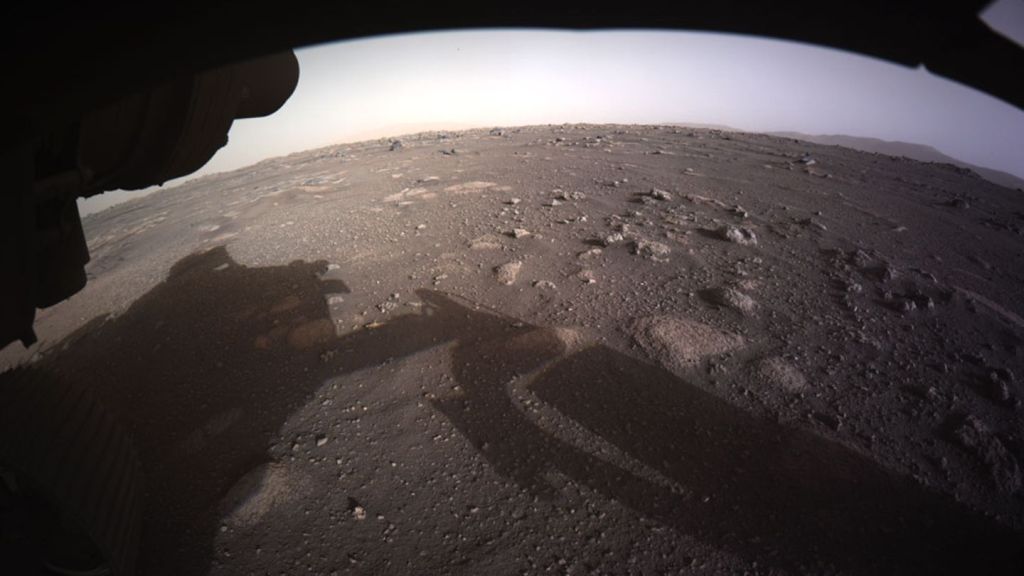Life on Earth is at least 3.5 billion years old, judging by the earliest known fossils of microorganisms. But how living creatures emerged on our home world, the only place in the universe where we know life exists, is one of the most tantalizing unsolved mysteries in science.
A mountain on the Moon could shed light on this important question, according to a forthcoming study in the journal JGR Planets. A robotic or human mission to the 250-meter-high peak, located in an ancient impact basin called Mare Crisium, would help scientists reconstruct key details about Earth’s first billion years, including the advent of Earthlings, the authors said.
Videos by VICE
There is abundant evidence that the Moon and Earth were getting pummeled by celestial bodies at this time, during an event known as the Late Heavy Bombardment. Mare Crisium, which stretches across 345 miles of the Moon’s northern hemisphere, was created by a cataclysmic impact during this period.
Though Earth was hit by the same flux of objects as the Moon, natural processes such as plate tectonics or the presence of oceans continually reshaped our world, washing away huge chunks of its geological memory. That leaves scientists with few clues about Earth’s early habitability.
“On the Earth, the record of these impact craters isn’t well-preserved,” said co-author Dan Moriarty, a NASA Postdoctoral Program fellow at Goddard Space Flight Center, in a call. “So, we go to the Moon to figure that out.”
Scientists have a rough idea of the relative ages of early lunar impacts based on how they erode and layer over each other, but their exact ages are not well-known. Mare Crisium appears to have been formed in the middle of the bombardment, which means that it could be a useful yardstick to reconstruct the overall timeline of this tumultuous period, which would be vital to assessing the habitability of Earth during its early years.
“With Crisium, we’ll be able to get a really good sense of when the bulk of the impacts were happening,” Moriarty explained. “If the bulk was really early, that might tell us that the impacts were kind of bunched up in time, whereas if it’s a little later, that tells us that they might have been spread-out impacts that extended a little bit more into the time when life got started on Earth.”
A period of heavy bombardment lasting tens of million years would temporarily inflame our planet into an inhospitable magma hellhouse. A bombardment that lasted hundreds of millions of years might still be damaging, but would have more localized effects.
The impacts could also have some beneficial consequences for the emergence of life, because some of the bodies hitting Earth may have delivered vital ingredients such as amino acids or water.
“It’s an interplay between habitability and how that’s affected by the rate of impacts versus how these impacts are delivering some of the building blocks of life,” Moriarty said.
In other words, getting an exact age for Mare Crisium could unlock all kinds of new insights about what Earth was experiencing in its infancy. But much of the melted rock from that ancient impact has been covered by subsequent volcanic flows, so scientists need to find an ideal spot where it is still exposed.
Moriarty and his colleagues scoured imagery taken by NASA’s Lunar Reconnaissance Orbiter (LRO) to look for the best candidates. They pinpointed a peak at the center of Yerkes Crater, which is located in the western region of Mare Crisium, as the most promising target.

When this crater was created, it belched up melt rock from the much larger collision that formed Mare Crisium, which is now strewn along the summit and slopes of the central mountain.
“If you could only grab one rock from Crisium to make sure you grabbed impact melt, that would be Yerkes Crater,” Moriarty said.
Fortunately, the peak is “more of an Appalachian Mountain versus a Rocky Mountain,” he added, meaning that the slopes are gentle and conducive to exploration by a robotic rover, or perhaps even a crew of astronauts.
If scientists finally got a firm read of the age of Mare Crisium, it could constrain “the environmental boundary conditions at the time of life’s emergence on Earth,” the team said in the paper.
So while Earth has preserved fossils that date back billions of years, the Moon still holds an important missing piece in the puzzle of life’s origins.




